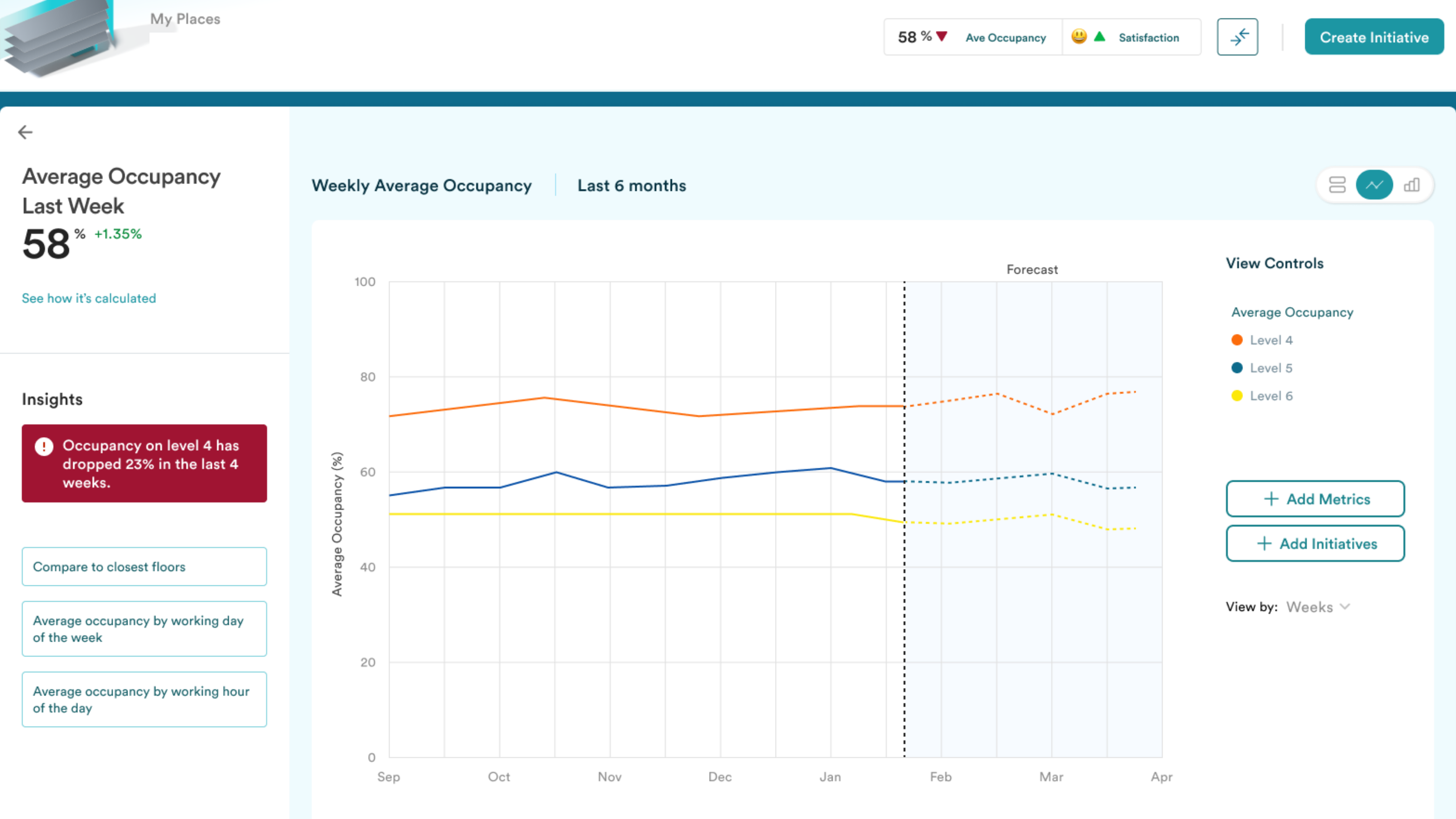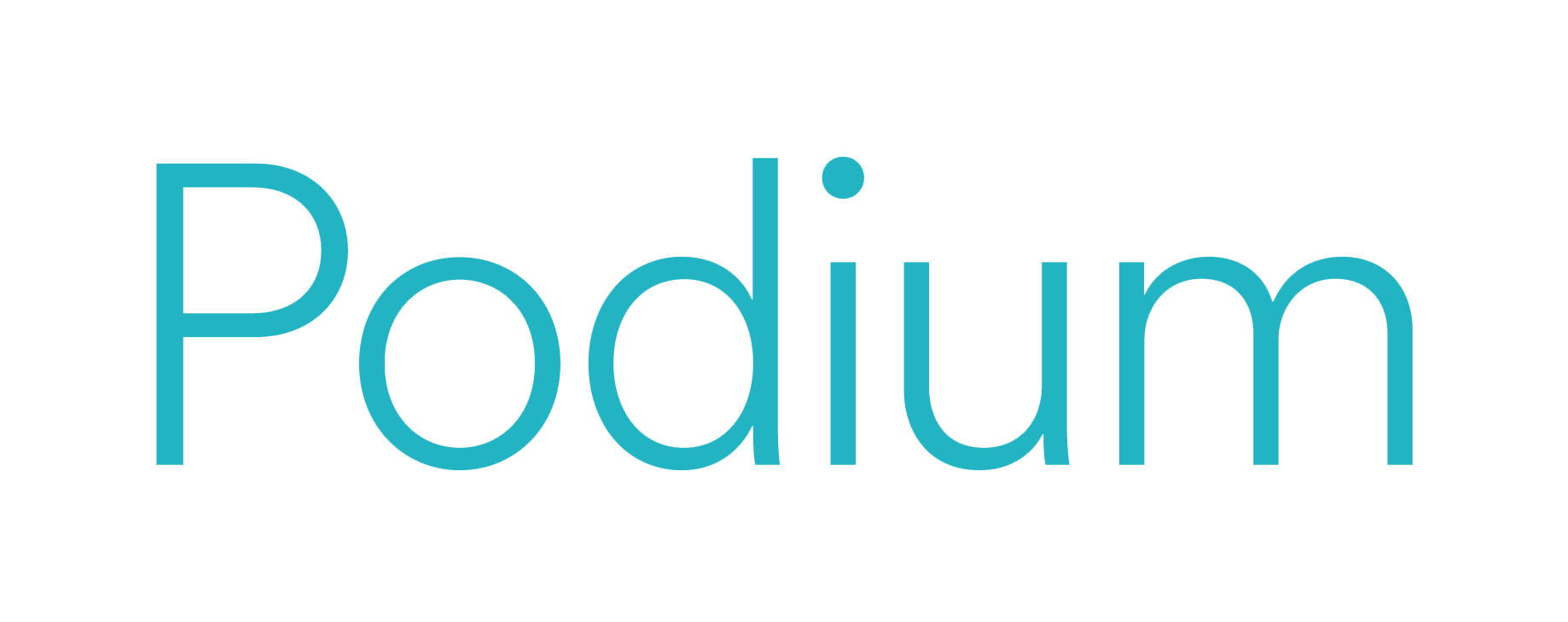
Podium Property Insights: Workplace Attendance Forecasting
- by
- Lendlease
- Podium
Traditionally, "attending" work has meant showing up at the appointed time and place, but the impact of the COVID-19 pandemic has decoupled productivity from proximity. The rise of working from home and the hybrid office in no way makes the office redundant, but it does make it essential for businesses to more accurately forecast the demand for office space, in order to optimise their investment in floor space and amenities to best meet the needs of employees, teams and the business.
Even if employees are only attending the office part-time, at least for the foreseeable future, it is still essential to track and forecast their attendance. The efficient allocation of space and the effective management of long-term leases is highly dependent on the ability to accurately forecast how the workplace will be utilised.
Workplace attendance tracks the hours and days that an employee works in the office with a granular view drilling down to the specific building and even the specific floor. This data forms the cornerstone of workplace attendance forecasting, allowing the business to anticipate and cater for the demand for desks, meeting rooms and other office facilities.
Podium Property Insights supports workplace attendance forecasting, drawing on a wide range of data sources. It combines utilisation and occupancy hard metrics with historical data and a range of other factors which can influence workplace attendance, including people-centric metrics such as employee satisfaction. There can be a strong correlation between employee satisfaction and their access to the right facilities, as an individual or team.
Rather than only relying on 'lagging' indicators, which draw insight from what has happened in the past, Podium Property Insights can also consider 'leading' indicators by studying current behaviours, to better predict what's likely to happen in the future.
For example, the number of days absent from the office is a lagging indicator of attendance, only becoming clear after the fact. Meanwhile, employee satisfaction can be a leading indicator of attendance, in order to proactively anticipate the number of people likely to attend the office on any given day.
Dynamic forecasting uses AI (artificial intelligence) and ML (machine learning) to predict metrics curves over time, allowing for not just workplace patterns but also broader influences across the city, such as traffic flow, public transport access and events such as public holidays.
Building on this, the Podium Property Insights road map includes workplace attendance scenario planning, to allow workplace managers to weigh their different options and assess the best choices for the future.
The data science team at Lendlease Digital tackled the challenge of workplace attendance forecasting by applying it to real-world data drawn from two Sydney buildings, used by Lendlease and Accenture employees. Leveraging Google Cloud Platform's technology and machine learning capabilities, the data science team effectively forecast up to 30 days attendance.
The solution drew together a broad range of data sets from a variety of sources. Card-based building access data came from the building's Lenel and CCURE physical access control system, tracking when employees swipe their cards while entering and exiting the office. This data also offers historical insight into how many employees attended the office and how frequently they attended.
Of course, it can't be assumed that every working week is exactly the same. The forecasting solution also factored in public holidays, along with periods of the year when employees tend to take annual leave, such as around the Christmas break.
Traffic data is another important factor for understanding whether or not employees are likely to come into the office. The workplace attendance forecasting solution called upon the NSW Data Analytics Centre's free access to a Sydney traffic volume API, as well as Opal card data covering public transport.
With the rise in workplace flexibility and the ability to work productively away from the office, the weather could also influence an employee's decision to come into the office. Particularly during extreme weather events such as storms and flooding.
To test this hypothesis, the solution also drew upon seven-day weather forecasts from Openweather. It also incorporated the US National Climatic Data Center's archive of global historical weather and climate data. These Sydney data sets include quality-controlled hourly, daily, monthly, seasonal and yearly measurements of temperature, rainfall and wind conditions.
Levels of workplace attendance have also changed dramatically at different stages of the COVID-19 pandemic. The forecasting solution also allows for the COVID-19 stringency index, measuring the impact of government restrictions, and COVID-19 daily case numbers, both drawn from the Oxford Coronavirus Government Response Tracker.
Applying machine learning capabilities to this broad range of data sources produced some very telling results. The COVID-19 stringency index, tracking the severity of government restrictions, predictably has a strong negative correlation with attendance – the greater the restrictions the lower the workplace attendance numbers.
There is also a strong positive correlation between attendance and Opal card data, indicating that an increase in Sydney transport usage translated into higher workplace attendance numbers. The daily temperature also has a positive correlation with the number of employees coming into the office.
When applied to workplace attendance forecasting, these insights proved effective enough to be close to actual attendance numbers across 30 days. This level of accuracy allows Podium Property Insights to assist workplace managers in making office space decisions with confidence, ensuring the workplace is best-meeting the needs of the business and its people.
